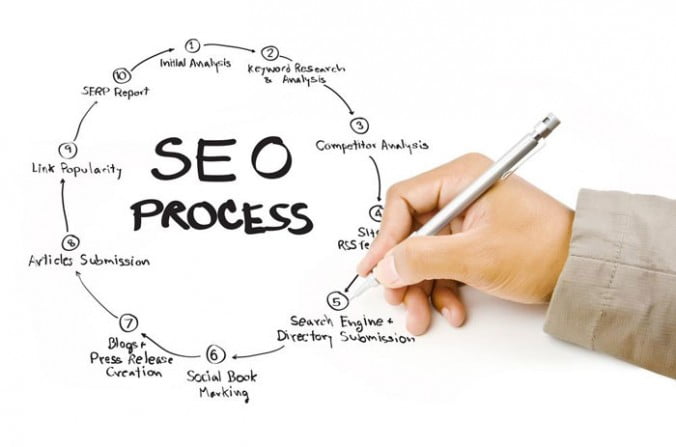Importance of Having a Great Website for Digital Marketing

Why a great website is necessary to be successful with digital marketing…
Having a great website is a necessity for any business looking to be successful with digital marketing. Your website is often the first interaction a potential customer has with your brand, so it’s crucial to make a strong first impression. In this article, we’ll explore why a great website is essential for digital marketing success and provide some statistics to back up our claims.
First Impressions Matter!
According to a study by Google, it only takes 50 milliseconds for a visitor to form an opinion about your website. That’s less time than it takes to blink your eyes! If your website looks outdated or unprofessional, visitors are likely to leave and never return. On the other hand, a well-designed website with a user-friendly interface can attract and retain visitors, leading to increased engagement and conversions.
A recent study by Adobe found that 38% of people will stop engaging with a website if the content or layout is unattractive. This highlights the importance of having a visually appealing website that is easy to navigate and provides a positive user experience.
Building a great website is just step 1… there is still more work to do
SEO and Website Performance
SEO is a critical component of digital marketing, and your website plays a significant role in your SEO success. A well-designed website with optimized content and metadata can improve your search engine rankings, making it easier for potential customers to find you online.
In fact, according to HubSpot, businesses with websites that have 401-1000 pages get six times more leads than those with 51-100 pages. This highlights the importance of having a website with a robust content strategy and plenty of pages that are optimized for SEO.
Mobile Optimization
With the increasing use of mobile devices, it’s essential to have a website that is optimized for mobile. In fact, according to a study by Google, 61% of users are unlikely to return to a mobile site they had trouble accessing, and 40% will visit a competitor’s site instead.
Having a website that is responsive and optimized for mobile devices can improve user experience and increase the likelihood of visitors staying on your site and converting into customers.

Don’t forget About Your Brand
Brand Image and Trust
Your website is also an opportunity to build your brand image and establish trust with potential customers. A well-designed website with clear messaging and branding can help build credibility and establish your business as a trustworthy source.
According to a survey by Stanford, 75% of people judge the credibility of a company based on the design of its website. This highlights the importance of having a professional and polished website that reflects your brand and values.
Conversion Rates
Ultimately, the goal of digital marketing is to drive conversions and sales, and your website plays a crucial role in achieving those goals. A well-designed website with clear calls-to-action and a user-friendly checkout process can improve conversion rates and increase revenue.
According to a study by Econsultancy, businesses with a strong website optimization strategy achieve an average conversion rate of 14.5%, compared to 2.6% for businesses with a weak website optimization strategy.
Now, Here’s How You Do It
A website that is fast, user-friendly, and visually appealing can help attract and retain visitors, drive conversions, and improve search engine rankings. In this article, we’ll explore key tips and considerations for designing a high-performance website.
Keep it Simple
When it comes to website design, less is often more. A cluttered or confusing website can harm user experience and drive visitors away. A simple and clean design can help visitors find what they’re looking for quickly and easily. Use a clear and concise language, a consistent layout, and easy-to-use navigation to guide visitors through your website.
Optimize for Speed
Website speed is a crucial factor in user experience and search engine rankings. According to Google, 53% of mobile users will abandon a website if it takes more than three seconds to load. To optimize your website speed, consider compressing images, reducing HTTP requests, and minimizing the use of plugins and scripts.
Make it Mobile-Friendly
With the increasing use of mobile devices, it’s essential to have a website that is optimized for mobile. A mobile-friendly website can improve user experience and drive more traffic to your site. Consider using a responsive design that adapts to different screen sizes, optimizing images for mobile devices, and making sure your website is easy to navigate on a small screen.
Prioritize User Experience
User experience is critical to the success of your website. Visitors should be able to find what they’re looking for quickly and easily, and the website should be visually appealing and easy to use. Consider using high-quality images and videos, clear calls-to-action, and simple forms to improve user experience.
Focus on Content
Content is the heart of your website, and it’s essential to make sure it’s high-quality, relevant, and engaging. Use clear and concise language, provide valuable information, and use visuals to make your content more appealing. Consider using videos, infographics, and other types of multimedia to make your content more engaging and shareable.
Optimize for SEO
Search engine optimization (SEO) is crucial to the success of your website. To improve your website’s SEO, consider optimizing your metadata, using relevant keywords, and optimizing images and videos. Make sure your website is crawlable by search engines and that it’s easy to navigate for both visitors and search engines.
Use Analytics to Track Performance
Analytics can help you track how your website is performing and identify areas for improvement. Use tools like Google Analytics to track your website’s traffic, user behavior, and conversion rates. Use this data to make informed decisions about your website’s design and content and to optimize your digital marketing efforts.
When it comes to designing a high-performance website, a few key steps are essential for succeeding online. By keeping it simple, optimizing for speed and mobile devices, prioritizing user experience and content, optimizing for SEO, and using analytics to track performance, businesses can create a website that attracts and retains visitors, drives conversions, and improves search engine rankings. A high-performance website can help businesses achieve their digital marketing goals and compete in today’s digital landscape.


